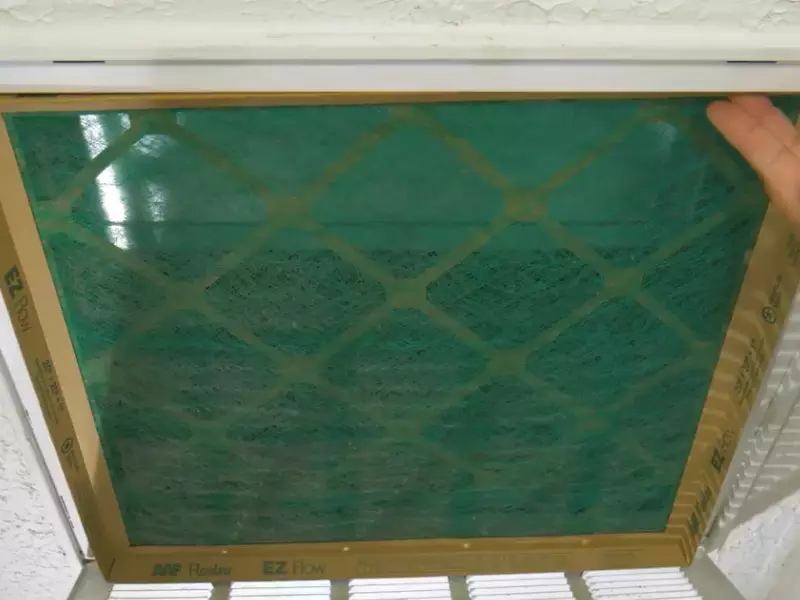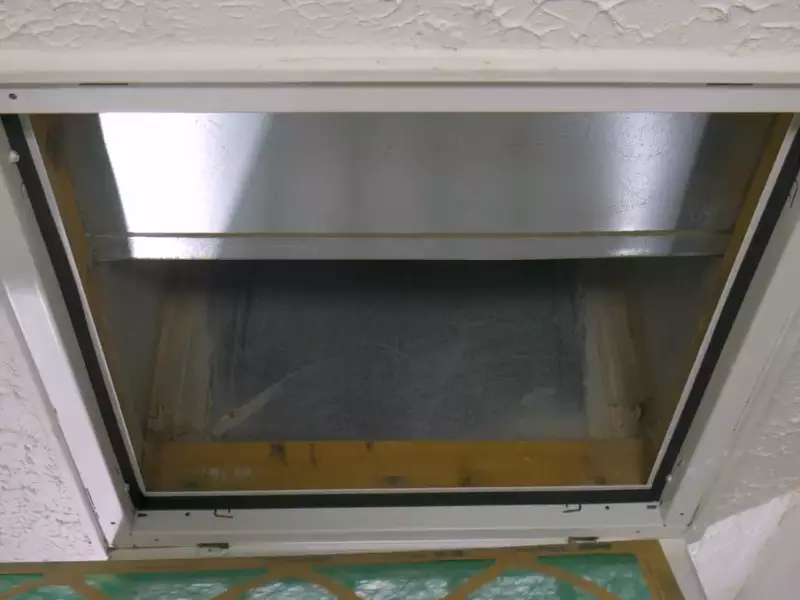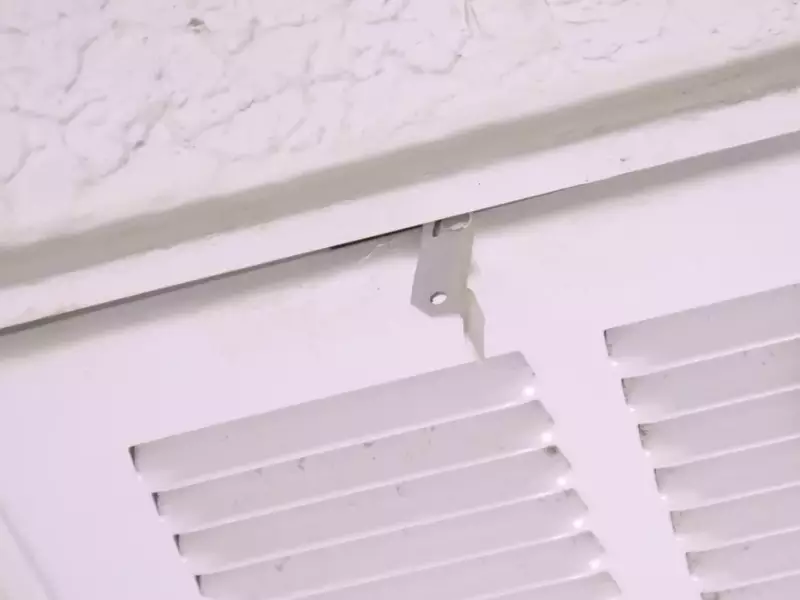To install an AC air filter, remove the old filter and carefully insert the new filter, ensuring a secure fit. An AC air filter is an important component of your air conditioning system, as it helps to improve air quality by filtering out dust, pollen, and other pollutants.
Regularly replacing your AC air filter is essential to maintain optimum performance and energy efficiency. We will provide you with a step-by-step guide on how to install an AC air filter effectively. By following these simple instructions, you can ensure clean, fresh air circulating through your home or office.
So, let’s get started!
The Importance Of A Clean Ac Air Filter
An AC air filter is a crucial component of your cooling system that helps to improve indoor air quality by trapping dust, pollen, mold spores, and other particles before they can circulate throughout your home. While it may seem like a small detail, a clean AC air filter plays a vital role in maintaining the performance and efficiency of your AC unit.
In this section, we will explore the significance of maintaining a clean filter for your AC unit and the impact of a dirty air filter on the performance and efficiency of your AC system. Let’s jump right in!

Significance of Maintaining a Clean Filter for Your AC Unit
Maintaining a clean filter for your AC unit is essential for several reasons. Here are some key points to consider:
- A clean AC air filter helps to improve indoor air quality by removing airborne contaminants. This is particularly important for those with allergies, asthma, or respiratory issues as it helps to reduce the presence of allergens and irritants in the air.
- When the filter is clean, air can easily flow through the system, allowing the AC unit to operate more efficiently. This means that your system won’t have to work as hard to cool your home, resulting in reduced energy consumption and lower utility bills.
- A clean air filter also contributes to the longevity of your AC unit. When the filter is clogged with dirt and debris, it restricts the airflow, causing your system to work harder than necessary. This additional strain can lead to premature wear and tear, potentially resulting in costly repairs or even the need for a replacement unit.
Impact of a Dirty Air Filter on the Performance and Efficiency of Your AC System
Now that we understand the significance of maintaining a clean filter, let’s take a closer look at the impact of a dirty air filter on the performance and efficiency of your AC system:
A dirty air filter can hinder the airflow, reducing the amount of cooled air that is distributed throughout your home. This can lead to uneven cooling, with some rooms being too warm while others stay comfortably cool. It can also cause your AC unit to run for longer periods to reach the desired temperature, resulting in increased energy consumption.
Additionally, a dirty filter can cause your AC unit to freeze up. When the airflow is restricted, the evaporator coil may not receive enough warm air to prevent condensation from freezing on its surface. This can lead to decreased cooling performance and potential damage to the system.
Moreover, a dirty air filter can also cause your AC unit to overheat. When the airflow is limited, the heat generated by the system cannot dissipate properly, putting additional strain on the compressor and other components. This can lead to reduced efficiency and increased risk of system breakdown.
In conclusion, regularly cleaning or replacing your AC air filter is vital for maintaining the performance, efficiency, and longevity of your AC system. By doing so, you can enjoy improved indoor air quality, lower energy bills, and a more comfortable living environment. Don’t overlook the importance of this simple maintenance task – it can make a significant difference in the overall performance and efficiency of your AC unit.
Understanding The Different Types Of AC Air Filters
When it comes to ensuring clean and healthy air quality in your home, installing the right AC air filter is crucial. However, with the wide variety of options available in the market, it can be overwhelming to choose the most suitable one for your needs. In this section, we will discuss the different types of AC air filters, their pros and cons, and help you make an informed decision.

Differentiating between various types of air filters available in the market
Before selecting an AC air filter, it is essential to understand the differences between the various types available. Let’s take a closer look at each type:
1. Fiberglass Filters
Fiberglass filters are the most basic and affordable option on the market. They consist of a simple fiberglass mesh that traps larger particles such as dust and debris. While these filters are budget-friendly, they offer minimal filtration and are not effective in capturing smaller particles or allergens.
2. Pleated Filters
Pleated filters are an upgrade from fiberglass filters. They feature a folded design that increases the filtration surface area, allowing them to capture smaller particles effectively. These filters are available in various MERV (Minimum Efficiency Reporting Value) ratings, ranging from 1 to 16. The higher the MERV rating, the better the filtration capabilities.
3. HEPA Filters
HEPA (High-Efficiency Particulate Air) filters are the gold standard when it comes to air filtration. These filters are capable of capturing tiny particles as small as 0.3 microns with an efficiency of 99.97%. HEPA filters are highly effective at removing allergens, pet dander, pollen, and even some bacteria and viruses. However, they are more expensive than fiberglass or pleated filters and may require modifications to your HVAC system for proper installation.
4. Electrostatic Filters
Electrostatic filters use an electrostatic charge to attract and capture airborne particles. They are available in both disposable and washable varieties. These filters are known for their ability to capture smaller particles and can improve indoor air quality. However, they do require regular maintenance and cleaning to maintain their effectiveness.
5. Activated Carbon Filters
Activated carbon filters are designed to remove odors and volatile organic compounds (VOCs) from the air. They have a porous surface that absorbs these chemicals. These filters are often used in conjunction with other types of filters for comprehensive air purification. However, they are not as effective in capturing larger particles or allergens.
Pros and cons of each type to help you choose the right one for your needs
Now that we have discussed the different types of AC air filters, let’s summarize their pros and cons to help you make an informed decision:
| AC Air Filter Type | Pros | Cons |
|---|---|---|
| Fiberglass Filters | Affordable Easy to find | Minimal filtration Not effective for smaller particles or allergens |
| Pleated Filters | Variable MERV ratings Better filtration than fiberglass filters | More expensive than fiberglass filters |
| HEPA Filters | High efficiency Effective at capturing small particles and allergens | More expensive May require modifications for installation |
| Electrostatic Filters | Effective at capturing smaller particles Available in disposable and washable varieties | Require regular maintenance and cleaning Not as effective for large particles or allergens |
| Activated Carbon Filters | Remove odors and VOCs Complement other filters | Not effective for larger particles or allergens |
Considering the pros and cons, it’s important to evaluate your specific needs, budget, and the air quality within your home. Consulting with a professional HVAC technician can also be beneficial in determining the most suitable AC air filter for optimal performance and clean air in your living space.

Steps To Install A New AC Air Filter
Properly installing and maintaining your AC air filter is critical in ensuring the overall efficiency and longevity of your air conditioning unit. Neglecting to replace your air filter regularly can lead to poor indoor air quality, reduced cooling performance, and even potential damage to your AC system. In this guide, we will walk you through each step of the process to install a new AC air filter, ensuring your unit operates at its optimal level.
Gathering the necessary tools and materials for the installation process
Before getting started, it’s important to gather the tools and materials needed for a smooth installation process. Having these items on hand will save you time and frustration:
| Tools | Materials |
|---|---|
|
|
Locating the air filter compartment in your AC unit
Next, you’ll need to locate the air filter compartment in your AC unit. The location of the compartment can vary depending on the type and model of your AC system. However, in most residential units, the air filter compartment is located near the air handler or furnace. It is often positioned in a horizontal or vertical orientation.
Removing the old air filter and inspecting it for any damage or debris
Once you’ve located the air filter compartment, it’s time to remove the old air filter. This step is crucial as it allows you to inspect the condition of the filter and determine whether it needs to be replaced. Carefully slide the filter out of its housing, taking note of the direction of airflow indicated on the filter frame. Inspect the old filter for any signs of damage, such as tears or excessive dirt buildup. If the filter is damaged or dirty beyond cleaning, it’s time for a replacement.
Properly positioning and inserting the new air filter
With the old filter removed, it’s time to properly position and insert the new air filter. Take your new filter and align it with the arrows or airflow indicators on the filter housing. This ensures that the filter is inserted in the correct orientation. Gently slide the filter into the compartment, making sure it fits securely and snugly.
Securing the filter in place and closing the compartment
Lastly, secure the filter in place by fastening any clips or securing mechanisms provided in your AC unit. Make sure the filter is properly sealed to prevent any air leakage or bypass. Once the filter is secured, close the compartment by replacing any covers, panels, or access doors that were removed during the installation process.
By following these steps and adhering to a regular maintenance schedule, you can ensure that your AC air filter is installed correctly and functioning optimally. Remember, a clean and properly installed air filter promotes better indoor air quality and allows your AC system to operate efficiently, saving you money in the long run.

Maintaining And Replacing AC air Filters Regularly
Regular maintenance and replacement of AC air filters are essential for maintaining the efficiency and performance of your air conditioning system. Not only do clean filters improve the air quality in your home or office, but they also help prevent costly repairs and extend the lifespan of your AC unit. In this section, we will explore the importance of regular filter maintenance and replacement, determining the appropriate frequency for filter replacement based on your environment and usage, as well as the pros and cons of cleaning and reusing washable filters versus replacing disposable filters.
Importance of regular filter maintenance and replacement
Regular maintenance and replacement of AC air filters play a crucial role in ensuring optimal air quality and efficient system operation. When air filters become dirty and clogged with dust, pollen, pet dander, and other particles, the airflow becomes restricted. This restriction forces your air conditioner to work harder, reducing its efficiency and potentially causing it to overheat. By regularly cleaning or replacing your air filters, you can maintain proper airflow, improve indoor air quality, and prevent potential issues such as frozen coils or system breakdowns.
Determining the appropriate frequency for filter replacement based on your environment and usage
The appropriate frequency for AC air filter replacement depends on various factors, including the environment in which the system operates and the level of usage. In dusty or polluted areas, air filters may need to be replaced more frequently compared to areas with cleaner air. Similarly, homes with pets or smokers may require more frequent filter changes due to increased airborne allergens and pollutants.
As a general guideline, it is recommended to inspect your air filters every month and replace them every 3 to 6 months, or as needed. Regularly checking and assessing the condition of your filters will help you determine the right replacement frequency for your specific situation.
Cleaning and reusing washable filters versus replacing disposable filters
When it comes to maintaining AC air filters, you have two options: cleaning and reusing washable filters or replacing disposable filters. Washable filters are designed for long-term use and can be cleaned by rinsing them with water or using a vacuum cleaner. This option is not only cost-effective but also environmentally friendly. On the other hand, disposable filters are designed for one-time use and need to be replaced when they become dirty or clogged.
While they require more frequent replacements, disposable filters are convenient and eliminate the hassle of cleaning. Consider your preferences, budget, and environmental concerns when deciding between the two options.
Additional Tips And Best Practices
Proper maintenance of your AC air filter is essential to ensure the efficiency and longevity of your cooling system. In addition to regularly replacing your air filter, there are a few additional tips and best practices that can help you get the most out of your AC unit.
By setting reminders for maintenance, consulting manufacturer guidelines, and considering professional AC services, you can keep your air filter in top condition and enjoy a consistently comfortable indoor environment.
Setting reminders for regular air filter maintenance
Remembering to change your air filter on a regular basis is crucial. Setting reminders can help you stay on top of this important task. Whether you use a smartphone app, an online calendar, or stick notes on your refrigerator, find a method that works best for you.
Consulting manufacturer guidelines for specific AC unit models
Each AC unit has its own unique specifications and requirements. Therefore, consulting the manufacturer’s guidelines is highly recommended to ensure proper installation and maintenance of your air filter. These guidelines typically provide specific instructions on the type of filter to use, how often it should be changed, and any additional maintenance tasks to perform.
Benefits of professional AC maintenance services
In addition to regular maintenance that you can perform as a homeowner, it is highly beneficial to seek professional AC maintenance services on a regular basis. These professionals have the expertise and knowledge to thoroughly inspect and clean your AC unit, including the air filter.
By scheduling regular professional maintenance, you can ensure that your AC system is running efficiently, identify any potential issues early on, and extend the lifespan of your equipment. Additionally, professionals may have access to specialized tools and technologies that can further enhance the performance of your AC unit.
Overall, implementing these additional tips and best practices can help you optimize the performance and lifespan of your AC air filter. By setting reminders for regular maintenance, referring to manufacturer guidelines, and considering professional AC services, you can ensure a cool and comfortable indoor environment while also maximizing energy efficiency.
Frequently Asked Questions On How To Install Ac Air Filter
Which Way Does The Ac Air Filter Go?
The AC air filter should be installed with the arrow or “airflow” indicator pointing towards the return air duct.
Is There A Correct Way To Put In An Ac Filter?
To correctly install an AC filter, follow these guidelines:
1) Turn off the unit and locate the filter slot.
2) Remove the old filter.
3) Check for the arrow indicating airflow direction.
4) Insert the new filter with the arrow pointing towards the unit.
5) Turn on the unit. That’s it!
What Happens If Ac Filter Is Backwards?
If the AC filter is backward, it can restrict airflow and reduce cooling efficiency. It may also cause the system to work harder, leading to increased energy consumption and potential damage to the air conditioner. Make sure to install the filter in the correct direction for optimal performance.
Which Way Should The Arrow Point On A Cabin Air Filter?
The arrow on a cabin air filter should point in the direction of the airflow.
Conclusion
Installing an AC air filter is a simple yet crucial step to ensure a clean and healthy indoor environment. By following the steps outlined in this guide, you can easily improve your air quality and maximize the efficiency of your AC system.
Remember to change your filter regularly to maintain optimal performance. With just a little effort, you can enjoy fresh, cool air all year round. Say goodbye to allergies and hello to a comfortable living space!
